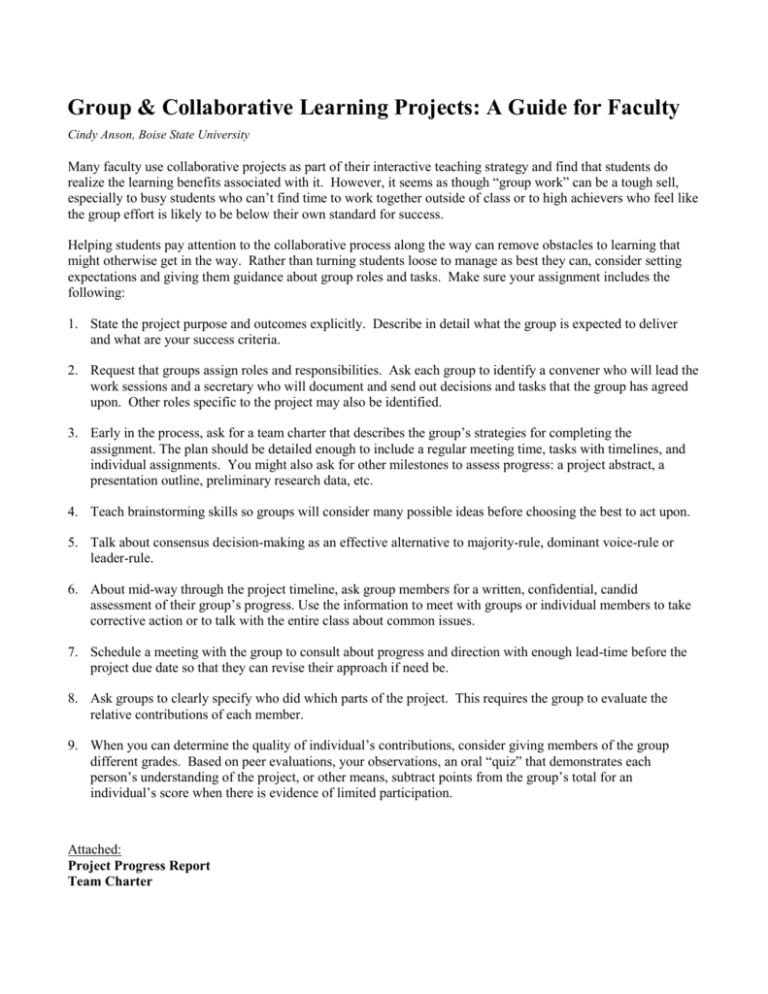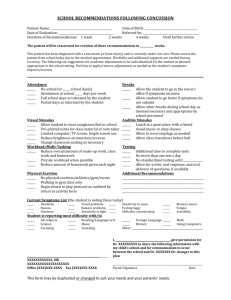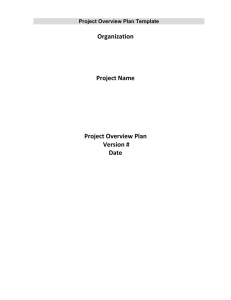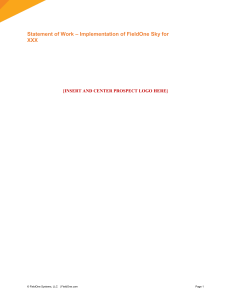Collaborative Project Assessment - Service-Learning
advertisement

Group & Collaborative Learning Projects: A Guide for Faculty Cindy Anson, Boise State University Many faculty use collaborative projects as part of their interactive teaching strategy and find that students do realize the learning benefits associated with it. However, it seems as though “group work” can be a tough sell, especially to busy students who can’t find time to work together outside of class or to high achievers who feel like the group effort is likely to be below their own standard for success. Helping students pay attention to the collaborative process along the way can remove obstacles to learning that might otherwise get in the way. Rather than turning students loose to manage as best they can, consider setting expectations and giving them guidance about group roles and tasks. Make sure your assignment includes the following: 1. State the project purpose and outcomes explicitly. Describe in detail what the group is expected to deliver and what are your success criteria. 2. Request that groups assign roles and responsibilities. Ask each group to identify a convener who will lead the work sessions and a secretary who will document and send out decisions and tasks that the group has agreed upon. Other roles specific to the project may also be identified. 3. Early in the process, ask for a team charter that describes the group’s strategies for completing the assignment. The plan should be detailed enough to include a regular meeting time, tasks with timelines, and individual assignments. You might also ask for other milestones to assess progress: a project abstract, a presentation outline, preliminary research data, etc. 4. Teach brainstorming skills so groups will consider many possible ideas before choosing the best to act upon. 5. Talk about consensus decision-making as an effective alternative to majority-rule, dominant voice-rule or leader-rule. 6. About mid-way through the project timeline, ask group members for a written, confidential, candid assessment of their group’s progress. Use the information to meet with groups or individual members to take corrective action or to talk with the entire class about common issues. 7. Schedule a meeting with the group to consult about progress and direction with enough lead-time before the project due date so that they can revise their approach if need be. 8. Ask groups to clearly specify who did which parts of the project. This requires the group to evaluate the relative contributions of each member. 9. When you can determine the quality of individual’s contributions, consider giving members of the group different grades. Based on peer evaluations, your observations, an oral “quiz” that demonstrates each person’s understanding of the project, or other means, subtract points from the group’s total for an individual’s score when there is evidence of limited participation. Attached: Project Progress Report Team Charter EXAMPLE: Group Project Progress Report This report is confidential and will not be shared with others. From your perspective and with utmost candor, rate your group using the following scale: 1 does not describe my group ___ ___ ___ ___ ___ ___ 2 3 somewhat describes my group 4 5 closely describes my group Each member has been assigned a specific role and/or responsibility. Our group decisions and assignments are documented and distributed so that each member knows what is expected. So far, we have met at least once outside of class to work on our project. Our group is working together very effectively to complete the project. Each of the group members is contributing something of value toward meeting our project goals. Contributions from members vary, with one or two people consistently doing more work than the others. Give one specific example of something you learned from the group that you probably wouldn’t have learned working alone. Give one specific example of something the other group members learned from you that they probably wouldn’t have learned otherwise. Suggest one change the group could make to improve its performance. Team Charter Contributed by Dr. Rob Anson, Department of Networking, Operations, and Information Systems How do individual members of a group know how to interact, how to meet deadlines, what to do when problems arise, when meetings will take place, how best to communicate with other members? A team charter can help set expectations, minimize misunderstandings, and provide a standard for individual contributions. Assign groups to create their own policies and procedures and provide a template for what to include. The following template is adapted from a Systems Analysis and Design course in which teams work together throughout the semester to design a computer information system. Group Mission: What is your overall goal for the group? Here is an example, “Develop a world class Internet voting system. Give each individual an opportunity to work in areas of interest and/or in areas they would like to improve.” Contact Information: There is no excuse for your team members not being able to contact you. Be as detailed as you need. Communication Protocol: You should discuss protocols for communicating: Which media to use (email, phone, Blackboard Group space, others)? A standard tag for your email subject line. How to mark things as urgent. Scheduled Group Meeting Times: The group must set a one to one and a half hour meeting time that is open to everyone on a regular basis each week. Sometimes it will not be needed, other times more will be needed. Roles/Phases: Address specific role expectations: who will do what and when. You might address both task responsibilities and also generic timelines. Will you set these roles for the whole project or rotate them? Remember that nobody is THE person in control. Everyone is. But each person helps out the group in some particular ways. You should have the following kinds of responsibilities allocated. Name Xxx xxx Xxx xxx Xxx xxx Role Project Facilitator Meeting Recorder Paper Editor Specific Responsibilities Ground Rules: Agree to these and any other ground rules that will govern your group interaction: 1. Work to each member's strengths. Be sure to take into account the individual strengths and weaknesses of each team member when assigning roles or task to the members of your team. Make sure that each person has meaningful assignments that they can fulfill. 2. Respect each member's differences. Some people are quick to identify a problem and design a solution. Others take a slower more methodical approach. Recognize the value of each approach. The best solutions are usually the result of collaboration of both approaches. 3. Communicate with other team members. Behavior that appears to demonstrate a total lack of concern or that appears pushy is often due to how a person approaches solving a problem. Do not rely on non-verbal communication or no communications when trying to understand how a team member is approaching a problem. A simple question, "How are you doing on this task?" can encourage team members to respond and let you know how things are really going. 4. Establish a meeting protocol. Hold team meetings regularly. The team leader should conduct the meeting. There should be an agenda for the meeting. The secretary should take notes at the meeting. Do not use the team meeting to design by committee. Instead make individual assignments and then have each team member go off, research and come back to report the results.





